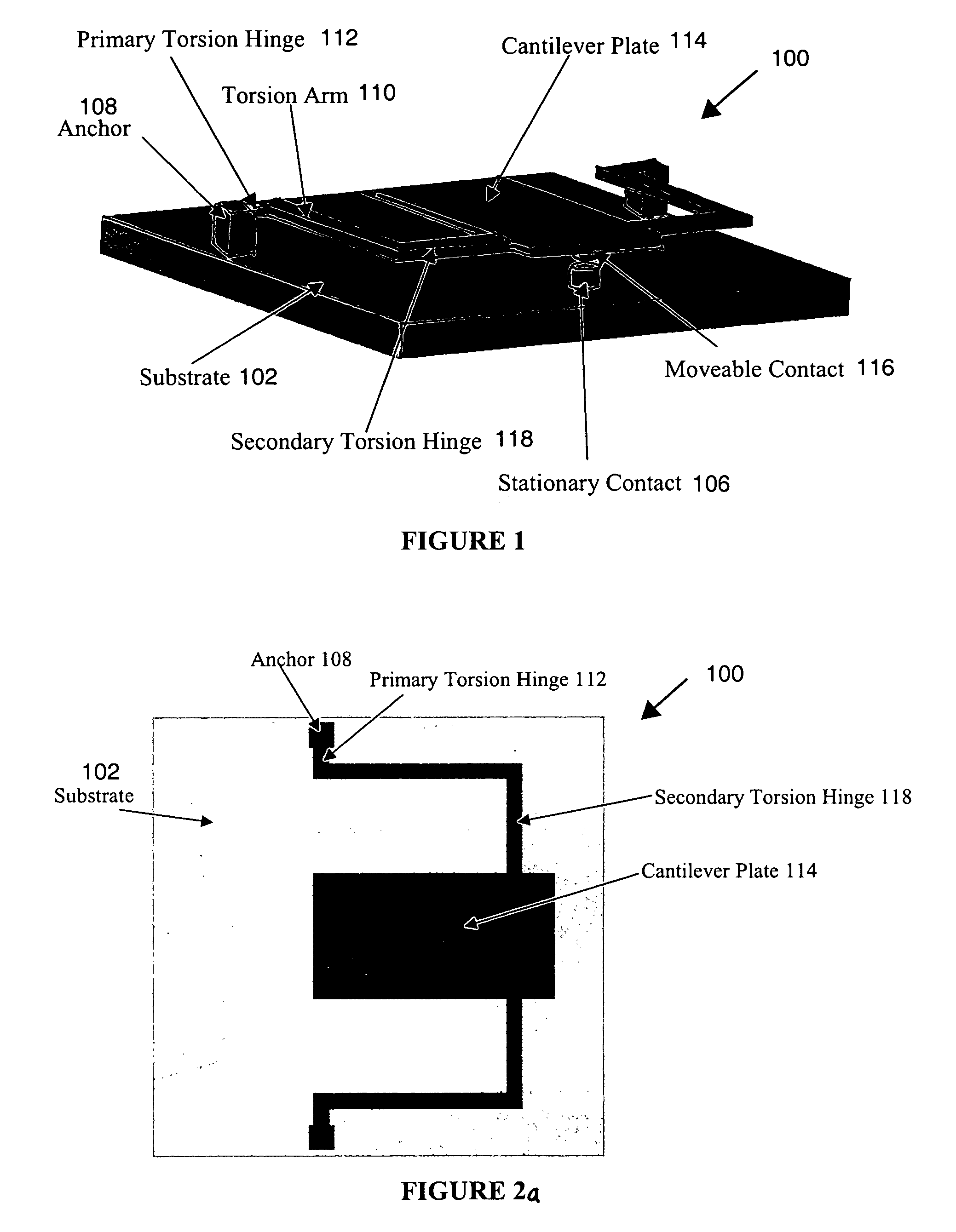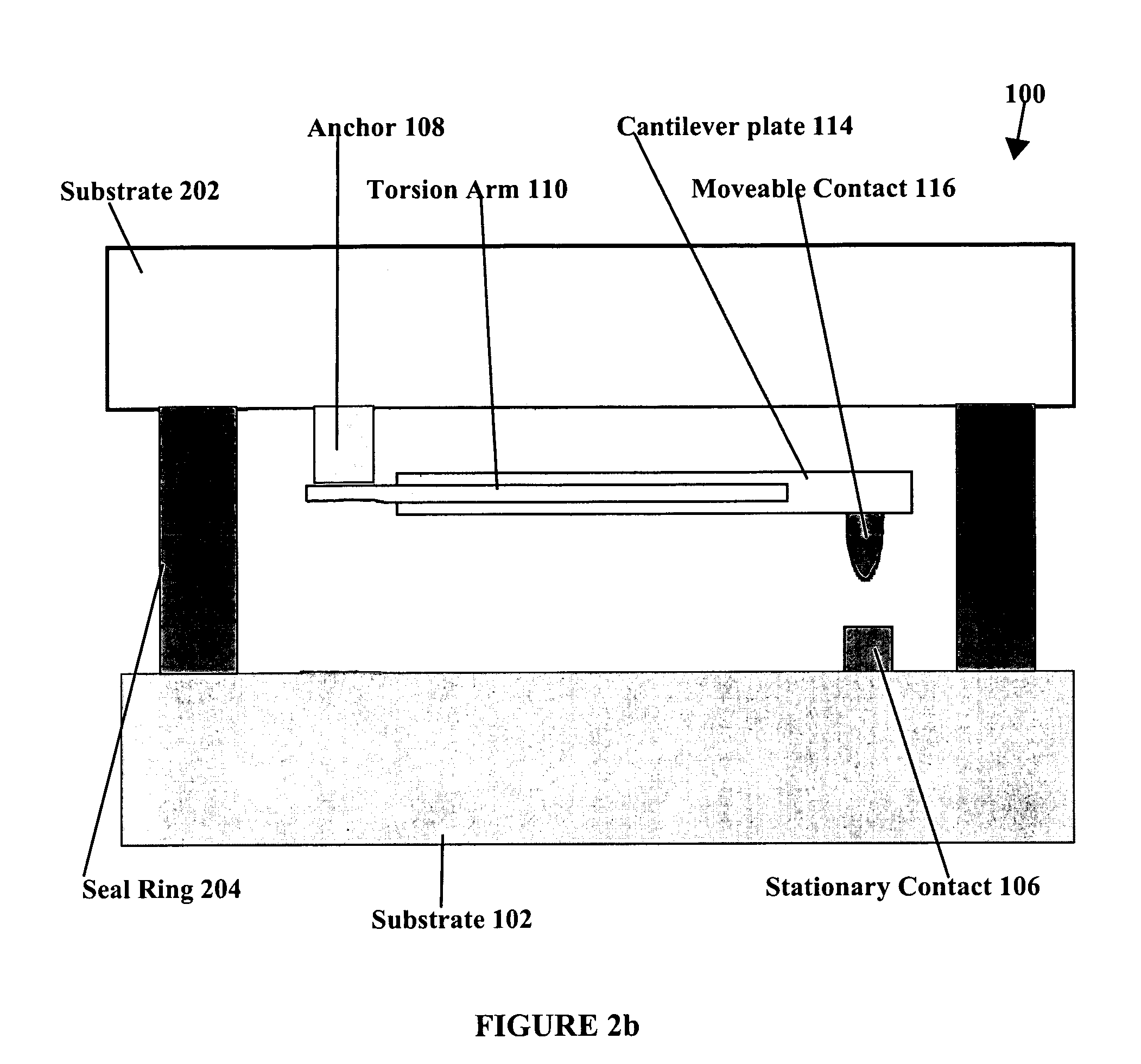High force MEMS device
a high-force, mems technology, applied in waveguide devices, electrostrictive/piezoelectric relays, electrical apparatus, etc., can solve the problems of affecting reliability and device life, two contacts may never achieve full closure, and the cantilever structure does not adequately provide the actuation force necessary to overcome stiction, etc., to reduce contact stiction, reduce contact damage and stiction, and reduce the impact force of the movable conta
- Summary
- Abstract
- Description
- Claims
- Application Information
AI Technical Summary
Benefits of technology
Problems solved by technology
Method used
Image
Examples
Embodiment Construction
[0032]The two-stage cantilever design disclosed herein improves the reliability of MEMS with cantilever actuators by using a cantilever structure with a high actuation force, a scrubbing contact motion, and an unzipping motion for contact separation. In most single stage cantilevers, to have a reasonable gap for isolation purposes, most of the cantilever structure must be relatively distant from the substrate area with the applied voltage. With the two stage design, a substantial portion of the cantilever plate that is rotated about the second axis of the second torsion hinge can positioned to be extremely close to the substrate area with an applied voltage, thus providing a much higher electrostatic force while maintain a large gap. The higher pull-on forces associated with this invention provide better electrical contact in switches and relays. For devices such as MEMS switches, this translates into lower resistances and lower insertion losses, as well as greater power handling. I...
PUM
 Login to View More
Login to View More Abstract
Description
Claims
Application Information
 Login to View More
Login to View More - R&D
- Intellectual Property
- Life Sciences
- Materials
- Tech Scout
- Unparalleled Data Quality
- Higher Quality Content
- 60% Fewer Hallucinations
Browse by: Latest US Patents, China's latest patents, Technical Efficacy Thesaurus, Application Domain, Technology Topic, Popular Technical Reports.
© 2025 PatSnap. All rights reserved.Legal|Privacy policy|Modern Slavery Act Transparency Statement|Sitemap|About US| Contact US: help@patsnap.com



